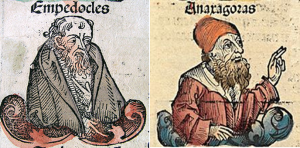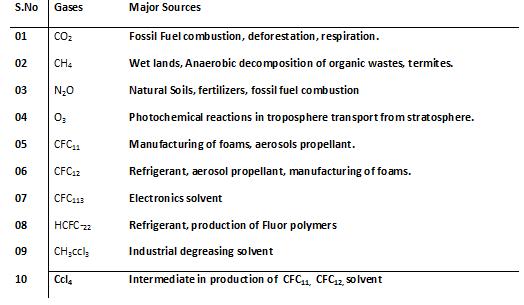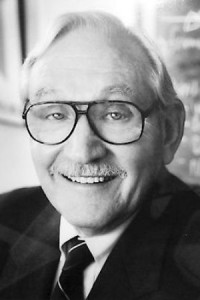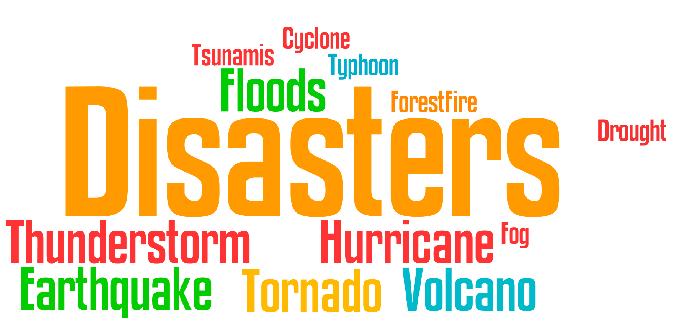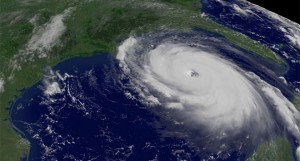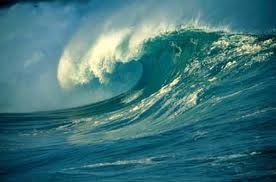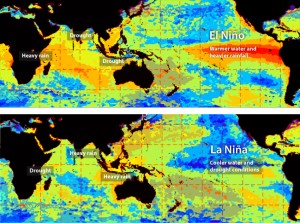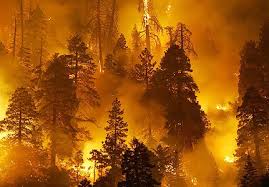Dr. V.K.Maheshwari, M.A. (Socio, Phil) B.Sc. M. Ed, Ph.D. Former Principal, K.L.D.A.V.(P.G) College, Roorkee, India
Mrs Sudha Rani Maheshwari, M.Sc (Zoology), B.Ed. Former Principal. A.K.P.I.College, Roorkee, India
‘You never seem to hear about psychic occult attack in spiritual literature. This knowledge has been conveniently forgotten.’
In considering the achieved course of the evolution of the spiritual being, we have to regard it from two sides, a consideration of the means, the lines of development utilized by Nature and a view of the actual results achieved by it in the human individual. There are four main lines which Nature has followed in her attempt to open up the inner being, religion, occultism, spiritual thought and an inner spiritual realization and experiences the three first are approaches, the last is the decisive avenue of entry. All these four powers have worked by a simultaneous action, more or less connected, sometimes in a variable collaboration, sometimes in dispute with each other, sometimes in a separate independence.
Religion has admitted an occult element in its ritual, ceremony, sacraments, it has leaned upon spiritual thinking, deriving from it sometimes a creed or theology, sometimes its supporting spiritual philosophy, the former, ordinarily, is the occidental method, the latter the oriental: but spiritual experience is the final aim and achievement of religion, its sky and summit. But also religion has sometimes banned occultism or reduced its own occult element to a minimum; it has pushed away the philosophic mind as a dry intellectual alien, leaned with all its weight on creed and dogma, pietistic emotion and fervor and moral conduct; it has reduced to a minimum or dispensed with spiritual realization and experience. Occultism has sometimes put forward a spiritual aim as its goal, and followed occult knowledge and experience as an approach to it, formulated some kind of mystic philosophy: but more often it has confined itself to occult knowledge and practice without any spiritual vistas; it has turned to thaumaturgy or mere magic or even deviated into diabolism.
As man discovers the secrets and processes of physical Nature, he moves more and more away from his early recourse to occultism and magic; the presence and felt influence of gods and invisible powers recedes as more and more is explained by natural workings, the mechanical procedure of Nature: but he still feels the need of a spiritual element and spiritual factors in his life and therefore keeps for a time the two activities running together. But the occult elements of religion, though still held as beliefs or preserved but also buried in rites and myths, lose their significance and diminish and the intellectual element increases; finally, where and when the intellectualizing tendency becomes too strong,
If we look at the past, we can still see the evidences of this line of natural evolution, although most of its earlier stages are hidden from us in the unwritten pages of prehistory. It has been contended that religion in its beginnings was nothing but a mass of animism, fetishism, magic, totemism, taboo, myth, superstitious symbol, with the medicine-man as priest, a mental fungus of primitive human ignorance, later on at its best a form of Nature-worship. It could well have been so in the primitive mind, though we have to add the proviso that behind much of its beliefs and practices there may have been a truth of an inferior but very effective kind that we have lost with our superior development. Primitive man lives much in a low and small province of his life-being, and this corresponds on the occult plane to an invisible Nature which is of a like character and whose occult powers can be called into activity by a knowledge and methods to which the lower vital intuitions and instincts stage of religious belief and practice which would be occult after a crude inchoate fashion in its character and interests, not yet spiritual; its main element would be a calling in of small life powers and elemental beings to aid of small life-desires and a rude physical welfare.
Occultism is in its essence man’s effort to arrive at a knowledge of secret truths and potentialities of Nature which will lift him out of slavery to his physical limits of being, an attempt in particular to possess and organize the mysterious, occult, outwardly still undeveloped direct power of mind upon life and of both mind and life over matter. There is at the same time an endeavor to establish communication with worlds and entities belonging to the supra-physical heights, depths and intermediate levels of cosmic being and to utilize this communion for the mastery of a higher truth and for a help to man in his will to make himself sovereign over nature’s powers and forces. This human aspiration takes its stand on the belief, intuition or intimation that we are on mere creatures of the mud, but souls, minds, wills that can know all the mysteries of this and every world and become not only Nature’s pupils but her adepts and masters. The occultist sought to know the secret of physical things also and in this effort he furthered astronomy, created chemistry, gave an impulse to other sciences, for he utilize geometry also and the science of numbers but still more he sought to know the secrets of super nature. In this sense occultism might be described as the science of the supernatural is in face either a spontaneous irruption of the phenomena of other nature into physical nature in the work of the occultist, a possession of the knowledge and power of the higher orders or grades of cosmic being and energy and the direction of their forces and processes towards the production of effects in the physical worlds by seizing on possibilities of interconnection and means for a material effectuality. There are powers of the mind and the life force which have not been included in nature’s present systematization of mind and life in matter, but are potential and can be brought to bear upon material things and happening or even brought in and added to the present systematization so as to enlarge the control of mind over our own life and body or to act on the minds, lives, bodies of others or on the movement of cosmic forces. The modern admission of hypnotism is an example of such a discovery and systematized application though still narrow and limited, limited by its method and formula of occult powers which otherwise touch us only by a casual or a hidden action whose process is in known to us or imperfectly caught by a few for we are all the time undergoing a battery of suggestions, emotional and sensational suggestions, thought waves, life waves that come on us or into us from others or from the universal energy but act and produce their effects without our knowledge. A systematized endeavour to know these movements and their law and possibilities to master and use the power or nature force behind them or to protect ourselves from them would fall within one province of occultism but it would only be a small part even of that province for wide and multiple are the possible field, uses, processes of this cast range of little explored knowledge.
Occultism is associated in popular idea with magic and magical formulae and a supposed mechanism of the supernatural. But this is only one side, nor is it altogether a superstition as is mainly imagined by those who have not looked deeply or at all at his convert side of secret nature force or experimented with its possibilities. Formulas and their application a mechanization of latent forces, can be astonishingly effective in the occult use of mind power and life power just as it is in physical science, but this is only a subordinate method and a limited direction. For mind and life forces are plastic, subtle and variable in their action and have not the material rigidity, they need a subtle and plastic intuition in the knowledge of them, In the interpretation of their action and process and in their application even in the interpretation and action the their established formulas. An overstress on mechanization and rigid formulation is likely to result in sterilization or a formalized limitation of knowledge and on the pragmatic side, too much error, ignorant convention, misuse and failure. Now that we are outgrowing the superstition of the sole truth of Matter, a swing backward towards the old occultism and to new formulations, as well as to a scientific investigation of the still hidden secrets and powers of mind and a close study of psychic and abnormal or supernormal psychological phenomena, is possible and, in parts, already visible, but if it is to fulfill itself, the true foundation, the true aim and direction, the necessary restrictions and precautions of this line of inquiry have to be rediscovered, its most important aim must be the discovery of the hidden truths and powers of the mind force and the life power and the greater forces of the concealed spirit. Occult science is, essentially, the science of the subliminal, the subliminal is ourselves and the subliminal in world nature and of all that is in connection with the subliminal including the sub-cons Occultism is associated in popular idea with magic and magical formulae and a supposed mechanism of the supernatural. But this is only one side, nor is it altogether a superstition as is mainly imagined by those who have not looked deeply or at all at his convert side of secret nature force or experimented with its possibilities. Formulas and their application a mechanization of latent forces, can be astonishingly effective in the occult use of mind power and life power just as it is in physical science, but this is only a subordinate method and a limited direction. For mind and life forces are plastic, subtle and variable in their action and have not the material rigidity, they need a subtle and plastic intuition in the knowledge of them, In the interpretation of their action and process and in their application even in the interpretation and action the their established formulas. An overstress on mechanization and rigid formulation is likely to result in sterilization or a formalized limitation of knowledge and on the pragmatic side, too much error, ignorant convention, misuse and failure. Now that we are outgrowing the superstition of the sole truth of Matter, a swing backward towards the old occultism and to new formulations, as well as to a scientific investigation of the still hidden secrets and powers of mind and a close study of psychic and abnormal or supernormal psychological phenomena, is possible and, in parts, already visible, but if it is to fulfill itself, the true foundation, the true aim and direction, the necessary restrictions and precautions of this line of inquiry have to be rediscovered, its most important aim must be the discovery of the hidden truths and powers of the mind force and the life power and the greater forces of the concealed spirit. Occult science is, essentially, the science of the subliminal, the subliminal is ourselves and the subliminal in world nature and of all that is in connection with the subliminal including the sub-conscientious and the super-conscientious, and the use of it as part of self knowledge and world knowledge and for the right dynamisation of that knowledge.
The knowledge of the supra-physical has been associated with mysticism and occultism and occultism has been banned as a superstition and fantastic error. But the occult is a part of existence; a true occultism means no more than a research into supra-physical realities and an unveiling of the hidden laws of nature, of all that is not obvious on the surface.
In modern times as physical science enlarged its discoveries and released the secret material forces of nature into an action governed by human knowledge for human use, occultism receded and was finally set aside on the ground that the physical alone is real and mind and life are only departmental activities of matter. On this basis believing material energy to be the key of all things, science has attempted to move towards a control of mind and life processes by a knowledge of the material instrumentation and process of our normal and abnormal mind and life functioning and activities the spiritual is ignored as only one form of mentality. It may be observed in passing that if this endeavor succeeded, it might not be observed in passing that if this endeavor succeeded, it might not be without danger for the existence of the human, race, even as now are certain other scientific discoveries misused or clumsily used by a humanity mentally and morally unready for the handling of powers so great and perilous, for it would be an artificial control applied without any knowledge of the secret forces which underlie and sustain our existence. Occultism in the West could be thus easily pushed aside because it never reached its majority, never acquired ripeness and a philosophic or sound systematic foundation. It indulged too freely in the romance of the supernatural or made the mistake of concentrating its major effort on the discovery of formulas and effective modes for using supernormal powers. It deviated into magic white and black or into romantic or thaumaturgy paraphernalia of occult mysticism and the exaggeration of what was after all a limited and scanty knowledge. These tendencies and this insecurity of mental foundation made it difficult to defend and easy to discredit, a target facile and vulnerable. In Egypt and the East this line of knowledge arrived at a greater and more comprehensive endeavor, this ampler maturity can be seen still intact in the remarkable system of the Tantras, it was not only a many sided science of the supernormal but supplied the basis of all the occult elements of religion and even developed a great and powerful system of spiritual discipline and self-realization. For the highest occultism is that which discovers the secret movements and dynamic supernormal possibilities of mind and life and spirit and uses them in their native force or by an applied process for the greater effectively of our mental, vital and spiritual beings.
Reference- Sri Aurobindo- The Life Divine












